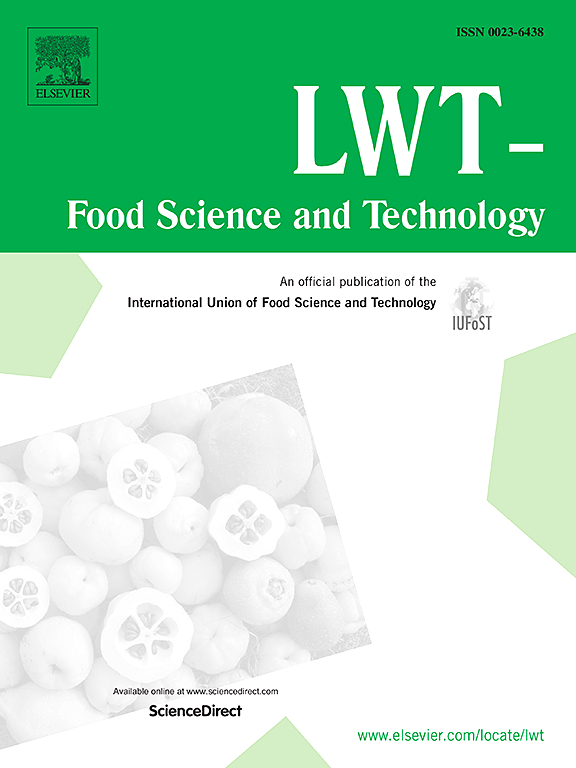Changes in quality parameters of ripened sausages added with olive leaf extract during refrigerated storage under modified atmosphere
IF 6
1区 农林科学
Q1 FOOD SCIENCE & TECHNOLOGY
引用次数: 0
Abstract
This study evaluated the influence of Olive Leaf Extract (OLE) on the quality parameters of sliced ripened sausages during 80 days of refrigerated storage in Modified Atmosphere Packaging (MAP). Shelf-life extension poses significant challenges to the meat industry. Lipid oxidation, microbial growth and color changes can induce undesirable alterations in sensory and nutritional traits during the storage of ripened sausages. OLE was used alone (F1, OLE = 1000 mg/kg) or in combination with nitrate and nitrite (F2, OLE = 500 mg/kg; NO2-NO3 = 35-35 mg/kg) compared to a control containing nitrate and nitrite alone (CTR). Microbiological analysis showed no microbial growth in any of the tested samples. Furthermore, the addition of OLE resulted in a lower b∗ value and delayed lipid oxidation compared with CTR (p < 0.05). Notably, CTR reached the rancidity threshold (1 mg malondialdehyde/kg) between 60 and 80 days, while F1 and F2 remained below this limit throughout the storage period. The findings indicate the positive influence of OLE in keeping the quality of ripened sausages during storage, contributing significantly to microbial stability, color preservation, and the reduction of lipid oxidation.
求助全文
约1分钟内获得全文
求助全文
来源期刊

LWT - Food Science and Technology
工程技术-食品科技
CiteScore
11.80
自引率
6.70%
发文量
1724
审稿时长
65 days
期刊介绍:
LWT - Food Science and Technology is an international journal that publishes innovative papers in the fields of food chemistry, biochemistry, microbiology, technology and nutrition. The work described should be innovative either in the approach or in the methods used. The significance of the results either for the science community or for the food industry must also be specified. Contributions written in English are welcomed in the form of review articles, short reviews, research papers, and research notes. Papers featuring animal trials and cell cultures are outside the scope of the journal and will not be considered for publication.
 求助内容:
求助内容: 应助结果提醒方式:
应助结果提醒方式:


